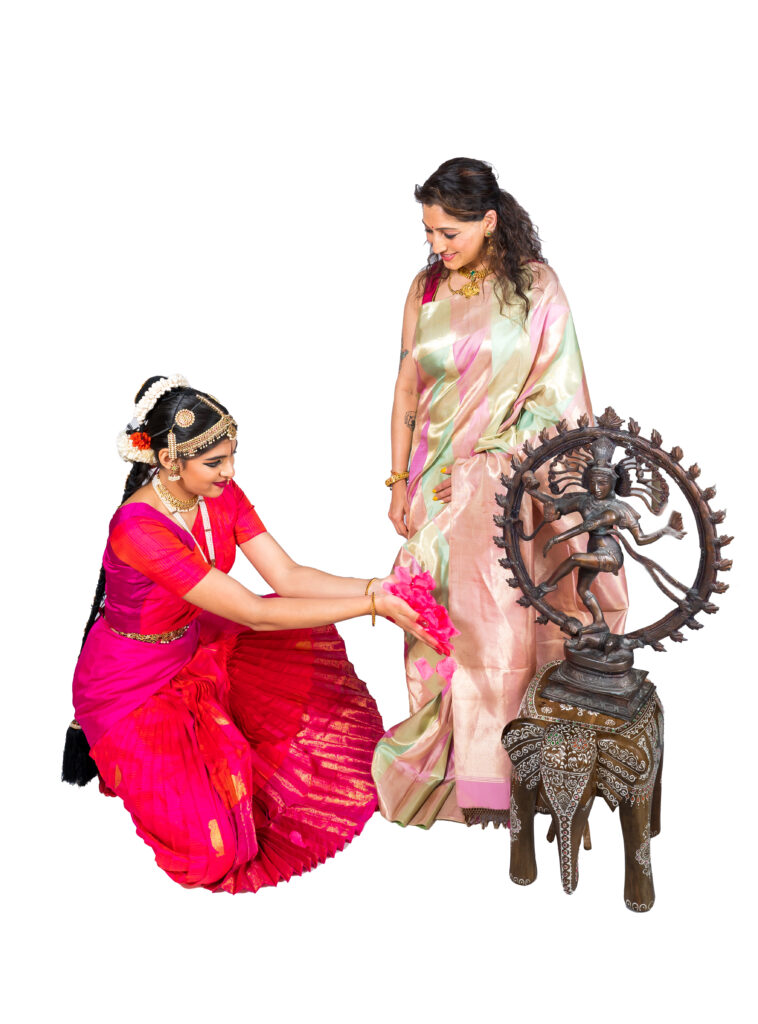Pushpanjali
PushpAnjali (offering of flowers)
Raga: Hamsavinodini
Tala: Adi
“While dancing, don’t just breathe in air, but breathe in the ‘space‘ around you… through every pore… it may make your dance fuller, expansive and have reach far beyond your tiny self… as though the entire space around you, dances within you.”


Naisha’s remarks:
I hope you enjoy this pushpanjali! My favorite part of is the entrance to the stage, and the geometry that the steps create. I always get excited when I practice this dance because I know it is the first time the audience will see me, and it is a rush of energy. Hope you feel the same! I am seeking the blessings of you all to perform my arangetram successfully!
Description:
Naisha begins her repertoire with Pushpanjali, an invocatory item of a classical dance. It is derived from the Sanskrit words “pushpa,” meaning flowers, and “Anjali” meaning offering or salutation. The piece is characterized by graceful movements, rhythmic patterns, and expressive gestures. Naisha incorporates intricate footwork, facial expressions, and hand gestures known as mudras to convey different emotions and meanings.
She holds flowers in her hands and offers praNaama (respects) to the deities, gurus, artists, and audience.. Through the performance of Pushpanjali, Naisha expresses devotion, humility, and gratitude to the divine, seeking blessings for a successful and auspicious dance performance. It sets the tone for the rest of the repertoire and establishes a connection between the dancer, the audience, and the spiritual realm.